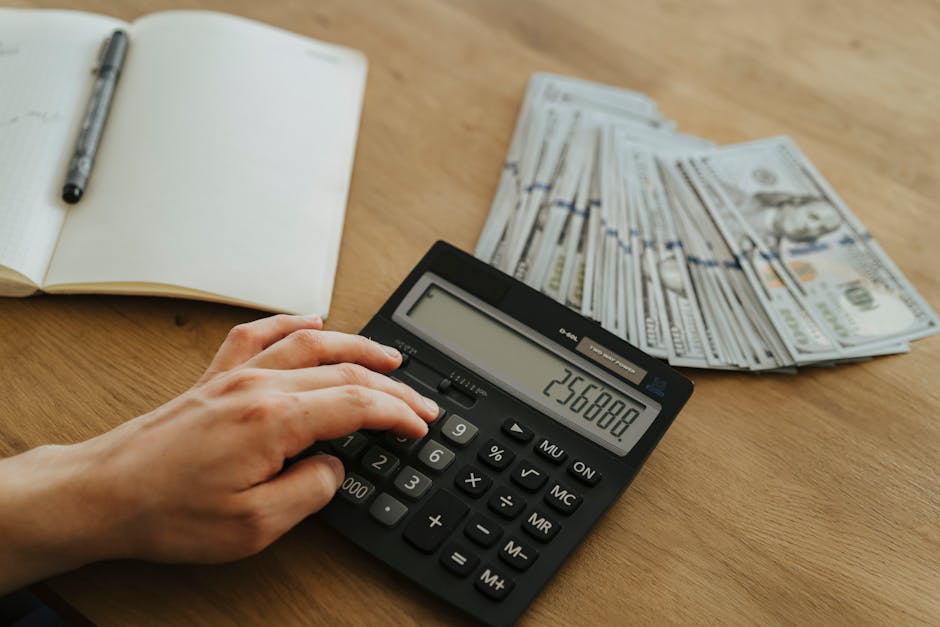Direct Deposit Number vs. Account Number: Key Differences
Categories: Financial Institution Software
Categories: Financial Institution Software
When it comes to direct deposit number vs account number, it’s essential to understand the key differences for smooth financial transactions. Knowing these differences can save you a lot of trouble, especially if you’re dealing with payroll, government benefits, or any other electronic funds transfers.
Here’s a quick overview:
Each number plays a vital role in ensuring that your money ends up in the right place, swiftly and securely. Misunderstandings or errors can lead to delays, rejections, or even the loss of funds.
Banks process countless transactions every day, and these numbers help automate the system to make it efficient and foolproof. The accurate use of these numbers is crucial, particularly for financial institutions facing ACH payment rejections or errors. Ensuring that your routing and account numbers are correctly entered into your software can drastically reduce these issues.
When you know the purpose and role of each number, managing and safeguarding your financial information becomes much easier.

Easy direct deposit number vs account number word list:
– account number different on check
– card number vs account number
– routing number vs account number
A routing number is a nine-digit code used by banks to identify specific financial institutions within the United States. These numbers are essential for processing various financial transactions, such as direct deposits, wire transfers, and electronic funds transfers.
The term ABA routing number comes from the American Bankers Association, which established this system to streamline and automate banking operations. This number ensures that your money reaches the correct bank. Think of it as the bank’s “address” in the Federal Reserve system.
When you initiate a financial transaction, such as setting up a direct deposit for your paycheck, the routing number guides the money to the proper bank. For example, if you’re transferring funds to your savings account, the routing number ensures the money ends up at the right financial institution.
A routing number proves that the bank is either federally or state-chartered and maintains an account with the Federal Reserve. This adds a layer of security and legitimacy to the banking system.
Large banks often have multiple routing numbers, usually based on the state where you hold your account. Smaller banks generally have just one routing number. This variation helps manage the high volume of transactions efficiently.
For domestic transactions, you use the standard routing number found at the bottom of your checks. However, for international wire transfers, a different routing number may be required. Always check with your bank to ensure you have the correct number for international transactions.
Imagine you’re setting up a direct deposit for your new job. You’ll need to provide both your routing number and account number to your employer. The routing number directs the funds to your bank, while the account number ensures the money is deposited into your specific account.

Understanding the role of the routing number can help you manage your finances more effectively and avoid common pitfalls like transaction rejections or delays.
Next, let’s dive into what an account number is and how it differs from a routing number.
An account number is a unique identifier assigned to your bank account. Think of it as a specific “address” for your money within the bank. While a routing number tells the banking system where to send the money, the account number tells it whose account to put the money into.
Your account number is unique to you and your account. No two accounts at the same bank will have the same account number. This ensures that when you make a transaction, the funds go exactly where they are supposed to.
Typically, an account number is between 8 to 12 digits long. The exact length can vary depending on the bank. Some banks may even include letters and special characters, but most stick to numerical digits.
Your account number is crucial for a variety of financial transactions. Here are some common uses:
When you initiate a transaction, your account number works together with your routing number to ensure the money reaches your specific account at your bank. For example, if you’re receiving a direct deposit, the routing number directs the funds to your bank, and the account number ensures they land in your account.
Because your account number provides direct access to your funds, it’s crucial to keep it secure. Avoid sharing it unless absolutely necessary and always safeguard your bank information to prevent fraud.
Imagine you’re setting up automatic bill payments for your utilities. You’ll provide your utility company with both your routing number and account number. The routing number directs the payment to your bank, and the account number ensures the payment is made from your specific account.
Understanding your account number and how it works can help you manage your finances more effectively and securely. Next, let’s explore the differences between a direct deposit number and an account number.
When it comes to managing your finances, understanding the difference between a direct deposit number and an account number is crucial. Both are essential for electronic transfers, but they serve different purposes.
A direct deposit number is essentially your account number used specifically for direct deposits. This is the number you provide when setting up direct deposits for payroll, government benefits, or other recurring payments.
Example: When you start a new job and fill out a direct deposit form, you’ll enter your direct deposit number so your salary goes directly into your account.
Your account number is a unique identifier for your bank account. It’s typically 8 to 12 digits long and is used for a variety of financial transactions, not just direct deposits. This number ensures that any funds transferred reach your specific account.
Example: Whether you’re transferring money via PayPal or setting up online bill payments, you’ll need your account number.
Both numbers play a key role in electronic transfers. Here’s how they work together:
For payroll and government benefits, the direct deposit number (your account number) ensures your funds are deposited directly into your bank account. This eliminates the need for physical checks and speeds up the process.
Real-World Use: Many employers and government agencies prefer direct deposits because they’re faster and more secure. According to Investopedia, direct deposits can even arrive up to two days early.
Your account number acts as a unique identifier for your account. No two accounts at the same bank will have the same account number. This ensures that your money goes exactly where it should.
Understanding these differences helps you manage your finances more effectively and securely. Next, let’s explore how to find your routing and account numbers.
Knowing where to find your routing and account numbers is essential for managing your finances. Here are some reliable methods:
The easiest way to find both your routing and account numbers is by looking at a paper check from your checkbook.

If you don’t have paper checks, don’t worry. You can also find these numbers through your bank’s online portal:
Still can’t find your numbers? Call your bank’s customer service line. They can provide the information after verifying your identity.
The numbers at the bottom of your checks are printed using magnetic ink, known as the MICR line (Magnetic Ink Character Recognition). This special ink allows banks’ digital processing equipment to read and process the account information quickly and accurately.
The use of magnetic ink is crucial for the secure and efficient handling of financial transactions. It ensures that the numbers are read correctly by machines, reducing errors and speeding up the process.
Knowing how to find your routing and account numbers will make managing your finances easier and more secure. Up next, we’ll discuss the importance of safeguarding your bank information.
When it comes to your bank information, security is key. Your routing and account numbers are crucial for many financial transactions, but they can also make you a target for fraud. Here’s how to keep your information safe:
Your bank account number is like a key to your financial kingdom. If someone gets hold of it, they can potentially access your money. This is why protecting your bank information is so important.
Tip: Always double-check the details when providing your bank information to avoid mistakes and potential fraud.
Just like you wouldn’t write down your debit card PIN, avoid writing down your routing and account numbers. Memorize them if you can. Writing them down increases the risk of them falling into the wrong hands.
If you have voided checks, don’t just throw them in the trash. Destroy them completely. Shred them or tear them into small pieces. Voided checks still have your routing and account numbers, making them a goldmine for fraudsters.
Many finance apps ask for your bank information to link accounts. While these apps can be convenient, they can also be targets for hackers. Before you share your details, make sure the app is reputable and has strong security measures.
Pro Tip: Look for apps that use multi-factor authentication and have good reviews.
One small mistake when entering your routing or account number can send your money to the wrong place. Always double-check the numbers before submitting them. This will save you time and prevent potential headaches.
By following these tips, you can help safeguard your bank information and reduce the risk of fraud. Up next, we’ll answer some frequently asked questions about direct deposit numbers and account numbers.
No, they are not the same. The direct deposit number is actually your bank’s routing number combined with your account number. The routing number is a 9-digit code that identifies your bank, while your account number is unique to your specific account.
Think of it this way: the routing number is like your bank’s address, and your account number is like your home address within that bank.
For direct deposit, you need two key numbers:
Make sure you double-check these numbers to avoid any errors. If you’re unsure, you can always verify them with your bank.
Your account number is usually between 8 and 12 digits long. This number is unique to your specific account and is used by your bank to identify where to deposit or withdraw money.
For example, if you have multiple accounts at the same bank, each account will have a different account number but the same routing number.
By understanding these differences, you can ensure your direct deposits are set up correctly and securely.
Understanding the direct deposit number vs. account number distinction is crucial for ensuring smooth financial transactions. The direct deposit number typically includes both your bank’s routing number and your unique account number. The routing number serves as the bank’s address in the Federal Reserve system, while the account number identifies your specific account within that bank.
For anyone handling payroll, government benefits, or other electronic transfers, having accurate routing and account numbers is essential to avoid payment delays and errors. This is where ACH Genie comes into play.
ACH Genie offers a powerful solution for financial institutions by providing fast validation of ABA numbers and editing capabilities for ACH files. Our software helps eliminate ACH payment rejections, ensuring smooth and efficient transactions. By validating and editing these files, we help institutions avoid common pitfalls that can disrupt cash flow and business operations.
In today’s digital financial landscape, tools like ACH Genie are not just optional; they are essential. Investing in robust ABA number validation and ACH file editing can redefine the future of your financial institution, offering a competitive edge in the market.
To learn more about how ACH Genie can help your institution streamline operations and ensure secure transactions, visit our Bank Account and Routing Number Validation page.
By understanding and utilizing these key differences, you can ensure your direct deposits are set up correctly and securely, paving the way for seamless financial transactions.